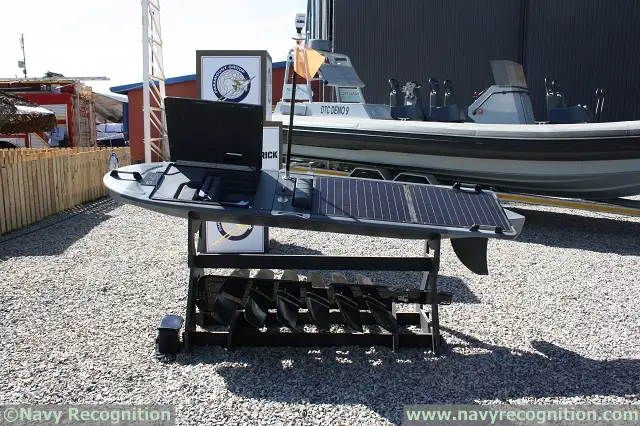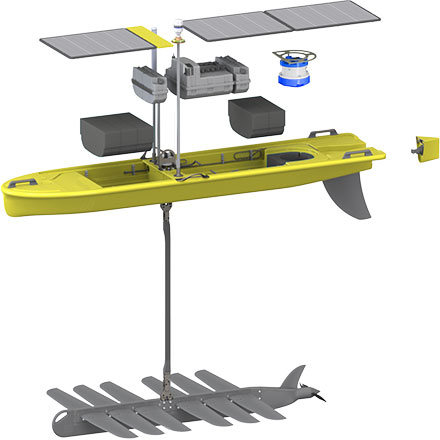Liquid
Robotics, the pioneer of wave and solar powered ocean robots, today
announced that its fleets of Wave Gliders have reached 1 million nautical
miles at sea—an important milestone for the unmanned surface vehicle
(USV) industry. The Wave Glider is the first USV to complete missions
from the Arctic to the Southern Ocean, operate through 17 hurricanes/typhoons,
and achieve a Guinness World Record for the “longest journey by
an autonomous, unmanned surface vehicle on the planet”. One million
nautical miles is the equivalent to 1.29x round trip journey to the
moon (at the moon’s furthest point) or approximately 46 times
around the world. |
“A
million nautical miles at sea is an important threshold for Liquid Robotics,
our customers, and the unmanned surface systems industry,” said
Gary Gysin, President and CEO of Liquid Robotics. “We’re
leveraging this expertise to help build an ocean sensor network with
Wave Gliders serving as the communications hub and mobile sensor platform.
Our vehicles are collecting and transmitting data today that is too
costly or difficult to obtain, but is vital to our understanding and
protection of the ocean.” |
Over
the past decade, government and commercial organizations have turned
to unmanned ocean robots to lower the cost, risks, and improve ocean
access, allowing better measurement, monitoring, and understanding of
maritime environments. In the Defense, Oil & Gas, and Scientific
markets, Wave Gliders have been deployed to extend the range and effectiveness
of traditional observation and surveillance systems. Missions have been
conducted in all five major oceans collecting and communicating environmental,
security, weather and seismic data.
“For the unmanned systems industry surpassing one million nautical
miles is a landmark event,” said Dr. James Bellingham, Director
Center for Marine Robotics, Woods Hole Oceanographic Institution. “It
clearly proves Wave Gliders (USVs) can sustain long duration operations
required for scientific and defense missions. They’re changing
how we explore and protect the ocean.” |
 Liquid Robotics was showcasing the SHARCs (military version of the Wave
Glider SV3 UUV) at AAD 2014 in South Africa.
Liquid Robotics was showcasing the SHARCs (military version of the Wave
Glider SV3 UUV) at AAD 2014 in South Africa.


























